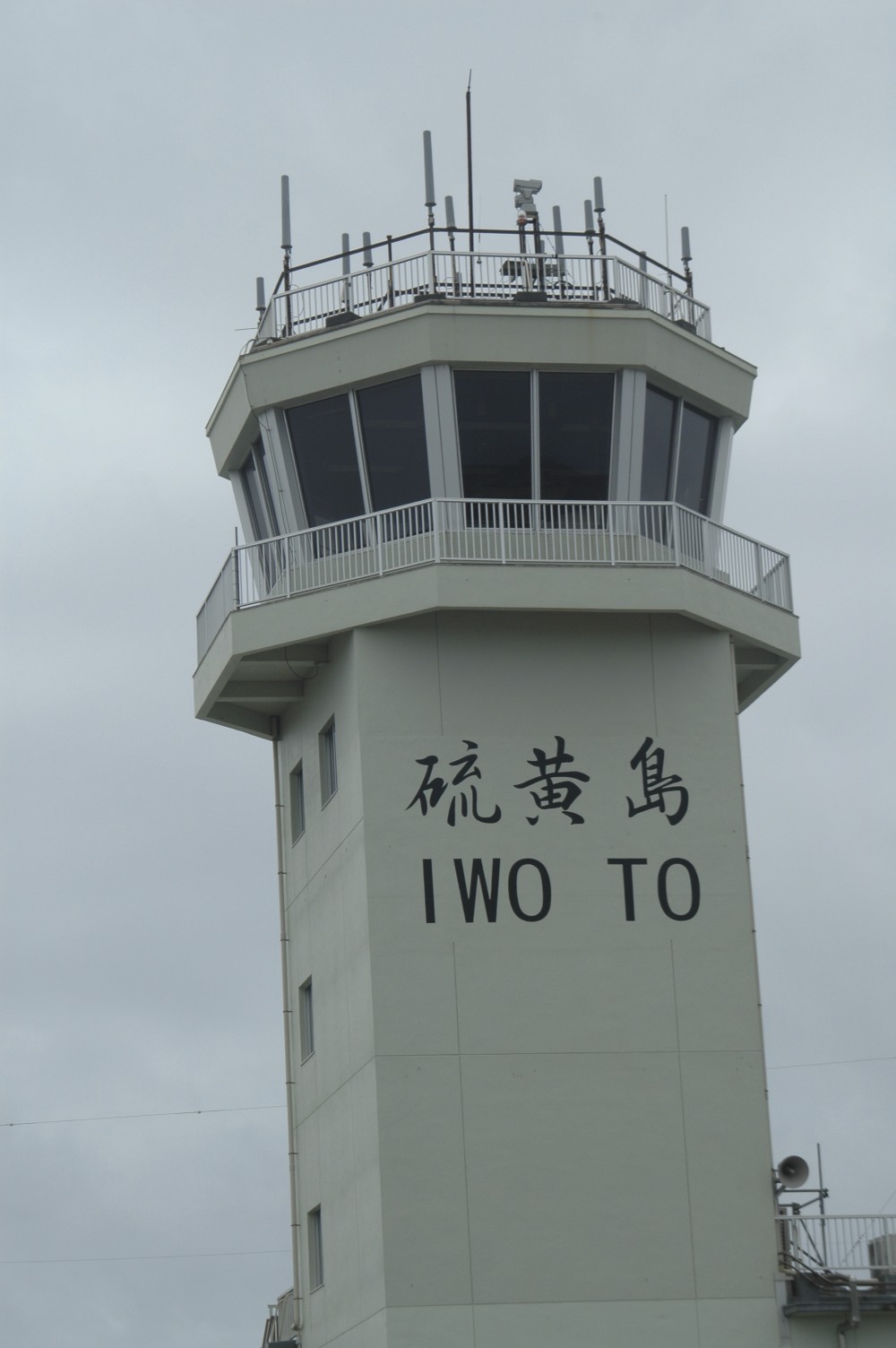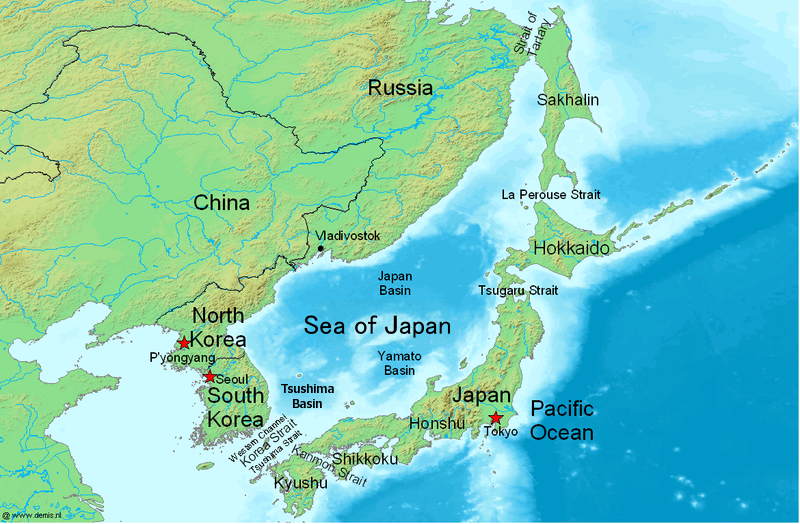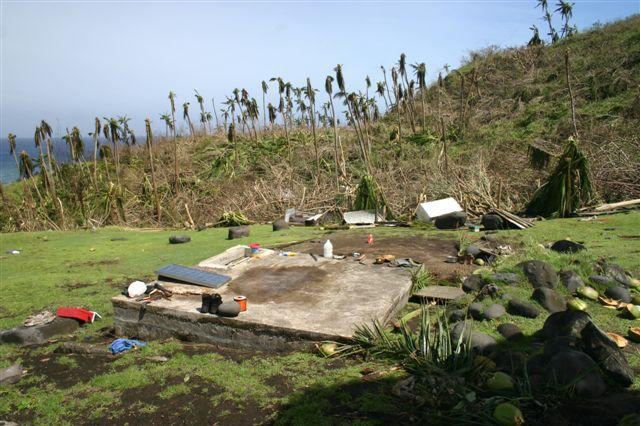|
Typhoon Cimaron (2018)
Typhoon Cimaron was a typhoon that caused minimal impacts in the Mariana Islands and Japan in August 2018. The twenty-third depression, twenty-first named storm, eleventh severe tropical storm, and seventh typhoon of the 2018 Pacific typhoon season, Cimaron developed from a tropical depression near the Marshall Islands on August 16. The depression soon became Tropical Storm Cimaron on August 18. Cimaron gradually intensified into a typhoon on August 21, and rapidly reached its peak intensity the next day. Cimaron then weakened before making two landfalls in Japan as a Category 1 typhoon on August 23. Cimaron continued to weaken until it became an extratropical cyclone and dissipated on August 24. Cimaron brought flash flooding to the Mariana Islands, namely Saipan. The storm then hit southern Japan as a Category 1 typhoon causing major travel disruptions along with minimal structural damage. About 33 people were injured and 3 people were swept out to sea. Agricultural damage ... [...More Info...] [...Related Items...] OR: [Wikipedia] [Google] [Baidu] |
Iwo To
Iwo Jima (, also ), known in Japan as , is one of the Japanese Volcano Islands and lies south of the Bonin Islands. Together with other islands, they form the Ogasawara Archipelago. The highest point of Iwo Jima is Mount Suribachi at high. Although south of the metropolis of Tokyo on the mainland, this island of 21 km2 (8 square miles) is administered as part of the Ogasawara Subprefecture of Tokyo. Since July 1944, when all the civilians were forcibly evacuated, the island has had a military-only population. The island was the location of the Battle of Iwo Jima between February 1945 and March 1945. This engagement saw some of the fiercest fighting of the Pacific War, with each side suffering over 20,000 casualties in the battle. The island became globally recognized when Joe Rosenthal, of the Associated Press, published his photograph '' Raising the Flag on Iwo Jima'', taken on Mount Suribachi. The US military occupied Iwo Jima until 1968, when it was returned to Ja ... [...More Info...] [...Related Items...] OR: [Wikipedia] [Google] [Baidu] |
Sea Of Japan
The Sea of Japan is the marginal sea between the Japanese archipelago, Sakhalin, the Korean Peninsula, and the mainland of the Russian Far East. The Japanese archipelago separates the sea from the Pacific Ocean. Like the Mediterranean Sea, it has almost no tides due to its nearly complete enclosure from the Pacific Ocean. This isolation also affects faunal diversity and salinity, both of which are lower than in the open ocean. The sea has no large islands, bays or capes. Its water balance is mostly determined by the inflow and outflow through the straits connecting it to the neighboring seas and the Pacific Ocean. Few rivers discharge into the sea and their total contribution to the water exchange is within 1%. The seawater has an elevated concentration of dissolved oxygen that results in high biological productivity. Therefore, fishing is the dominant economic activity in the region. The intensity of shipments across the sea has been moderate owing to political issues, but it ... [...More Info...] [...Related Items...] OR: [Wikipedia] [Google] [Baidu] |
Kochi Prefecture
Kochi (), also known as Cochin ( ) ( the official name until 1996) is a major port city on the Malabar Coast of India bordering the Laccadive Sea, which is a part of the Arabian Sea. It is part of the district of Ernakulam in the state of Kerala and is commonly referred to as Ernakulam. Kochi is the most densely populated city in Kerala. As of 2011, it has a corporation limit population of 677,381 within an area of 94.88 km2 and a total urban population of more than of 2.1 million within an area of 440 km2, making it the largest and the most populous metropolitan area in Kerala. Kochi city is also part of the Greater Cochin region and is classified as a Tier-II city by the Government of India. The civic body that governs the city is the Kochi Municipal Corporation, which was constituted in the year 1967, and the statutory bodies that oversee its development are the Greater Cochin Development Authority (GCDA) and the Goshree Islands Development Authority (GIDA). The ... [...More Info...] [...Related Items...] OR: [Wikipedia] [Google] [Baidu] |
Kagawa Prefecture
is a prefecture of Japan located on the island of Shikoku. Kagawa Prefecture has a population of 949,358 (as of 2020) and is the smallest prefecture by geographic area at . Kagawa Prefecture borders Ehime Prefecture to the southwest and Tokushima Prefecture to the south. Takamatsu is the capital and largest city of Kagawa Prefecture, with other major cities including Marugame, Mitoyo, and Kan'onji. Kagawa Prefecture is located on the Seto Inland Sea across from Okayama Prefecture on the island of Honshu, which is connected by the Great Seto Bridge. Kagawa Prefecture includes Shōdoshima, the second-largest island in the Seto Inland Sea, and the prefecture's southern land border with Tokushima Prefecture is formed by the Sanuki Mountains. History Kagawa was formerly known as Sanuki Province. For a brief period between August 1876 and December 1888, Kagawa was made a part of Ehime Prefecture. Battle of Yashima Located in Kagawa's capital city, Takamatsu, the mou ... [...More Info...] [...Related Items...] OR: [Wikipedia] [Google] [Baidu] |
Tottori Prefecture
is a prefecture of Japan located in the Chūgoku region of Honshu. Tottori Prefecture is the least populous prefecture of Japan at 570,569 (2016) and has a geographic area of . Tottori Prefecture borders Shimane Prefecture to the west, Hiroshima Prefecture to the southwest, Okayama Prefecture to the south, and Hyōgo Prefecture to the east. Tottori is the capital and largest city of Tottori Prefecture, with other major cities including Yonago, Kurayoshi, and Sakaiminato. Tottori Prefecture is home to the Tottori Sand Dunes, the largest sand dunes system in Japan, and Mount Daisen, the highest peak in the Chūgoku Mountains. Etymology The word "Tottori" in Japanese is formed from two ''kanji'' characters. The first, , means "bird" and the second, means "to get". Early residents in the area made their living catching the region's plentiful waterfowl. The name first appears in the Nihon shoki in the 23rd year of the Emperor Suinin (213 AD) when Yukuha Tana, an elde ... [...More Info...] [...Related Items...] OR: [Wikipedia] [Google] [Baidu] |
Wakayama Prefecture
is a prefecture of Japan located in the Kansai region of Honshu. Wakayama Prefecture has a population of 944,320 () and has a geographic area of . Wakayama Prefecture borders Osaka Prefecture to the north, and Mie Prefecture and Nara Prefecture to the northeast. Wakayama is the capital and largest city of Wakayama Prefecture, with other major cities including Tanabe, Hashimoto, and Kinokawa. Wakayama Prefecture is located on the western coast of the Kii Peninsula on the Kii Channel, connecting the Pacific Ocean and Seto Inland Sea, across from Tokushima Prefecture on the island of Shikoku. History Present-day Wakayama is mostly the western part of the province of Kii. 1953 flood disaster On July 17–18, 1953, a torrential heavy rain occurred, followed by collapse of levees, river flooding and landslides in a wide area. Many bridges and houses were destroyed. According to an officially confirmed report by the Government of Japan, 1,015 people died, with 5,709 inj ... [...More Info...] [...Related Items...] OR: [Wikipedia] [Google] [Baidu] |
Okayama Prefecture
is a prefecture of Japan located in the Chūgoku region of Honshu. Okayama Prefecture has a population of 1,906,464 (1 February 2018) and has a geographic area of 7,114 km2 (2,746 sq mi). Okayama Prefecture borders Tottori Prefecture to the north, Hyōgo Prefecture to the east, and Hiroshima Prefecture to the west. Okayama is the capital and largest city of Okayama Prefecture, with other major cities including Kurashiki, Tsuyama, and Sōja. Okayama Prefecture's south is located on the Seto Inland Sea coast across from Kagawa Prefecture on the island of Shikoku, which are connected by the Great Seto Bridge, while the north is characterized by the Chūgoku Mountains. History Prior to the Meiji Restoration of 1868, the area of present-day Okayama Prefecture was divided between Bitchū, Bizen and Mimasaka Provinces. Okayama Prefecture was formed and named in 1871 as part of the large-scale administrative reforms of the early Meiji period (1868–1912), and the borders of the ... [...More Info...] [...Related Items...] OR: [Wikipedia] [Google] [Baidu] |
Northern Mariana Islands
The Northern Mariana Islands, officially the Commonwealth of the Northern Mariana Islands (CNMI; ch, Sankattan Siha Na Islas Mariånas; cal, Commonwealth Téél Falúw kka Efáng llól Marianas), is an unincorporated territory and commonwealth of the United States consisting of 14 islands in the northwestern Pacific Ocean.Lin, Tom C.W.Americans, Almost and Forgotten 107 California Law Review (2019) The CNMI includes the 14 northernmost islands in the Mariana Archipelago; the southernmost island, Guam, is a separate U.S. territory. The United States Department of the Interior cites a landmass of . According to the 2020 United States Census, 47,329 people were living in the CNMI at that time. The vast majority of the population resides on Saipan, Tinian, and Rota. The other islands of the Northern Marianas are sparsely inhabited; the most notable among these is Pagan, which for various reasons over the centuries has experienced major population flux, but formerly had resi ... [...More Info...] [...Related Items...] OR: [Wikipedia] [Google] [Baidu] |
Liaison Officer
A Liaison officer is a person who liaises between two or more organizations to communicate and coordinate their activities on a matter of mutual concern. Generally, liaison officers are used for achieving the best utilization of resources, or employment of services of one organization by another. Liaison officers often provide technical or subject matter expertise of their parent organization. Usually, an organization embeds or attaches a liaison officer into another organization to provide face-to-face coordination. Military Liaison Officers (MLO) In the military, liaison officers may coordinate activities to protect units from collateral damage Collateral damage is any death, injury, or other damage inflicted that is an incidental result of an activity. Originally coined by military operations, it is now also used in non-military contexts. Since the development of precision guided .... They also work to achieve mutual understanding or unity of effort among disparate ... [...More Info...] [...Related Items...] OR: [Wikipedia] [Google] [Baidu] |
Alamagan
Alamagan is an island in the Northern Mariana Islands in the Pacific Ocean, north of Guguan, north of Saipan, and south of Pagan. It is currently uninhabited. History Alamagan was once settled by the Chamorros, who left behind archaeological evidence including stone columns (called latte stones) and ceramics. From a European perspective, Alamagan was discovered in 1669 by the Spanish missionary Diego Luis de San Vitores, who named it ''Concepción'' (Immaculate Conception in Spanish). It is likely that it was previously visited in 1522 by the Spanish sailor Gonzalo de Vigo, a deserter from the Magellan expedition in 1521 and the first European castaway in the history of the Pacific. In 1695, Alamagan's natives were forcibly removed to Saipan, and three years later to Guam. Following the sale of the Northern Marianas by Spain to the German Empire in 1899, Alamagan was administered as part of German New Guinea. During this time, a private firm, the Pagan Society, owned by ... [...More Info...] [...Related Items...] OR: [Wikipedia] [Google] [Baidu] |
Pagan (island)
Pagan is a volcanic island in the Marianas archipelago in the northwest Pacific Ocean, under the jurisdiction of the Commonwealth of the Northern Mariana Islands. It lies midway between Alamagan to the south, and Agrihan to the north. The island has been largely uninhabited ever since most of the residents were evacuated due to volcanic eruptions in 1981. History Archaeological finds indicate that Pagan was settled from several centuries BC. The first European contact was in 1669, when the island was sighted by the Spanish missionary Diego Luis de San Vitores who named it ''San Ignacio'' ( Saint Ignatius in Spanish). It is likely that it was previously visited in 1522 by the Spanish sailor Gonzalo de Vigo, deserter from the Magellan expedition in 1521, and the first European castaway in the history of the Pacific. The native Chamorro population was forcibly deported to Saipan in 1695, and then three years later to Guam. The Chamorros began to return to Pagan in the early 19 ... [...More Info...] [...Related Items...] OR: [Wikipedia] [Google] [Baidu] |


.jpg)


